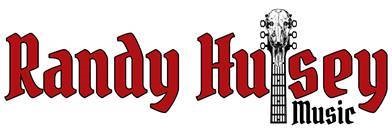S9: E8: Jim Odom (LeRoux) – The Presonus Matermind

Jim Odom’s journey reads like a map of modern American music: Baton Rouge roots, LeRoux’s stage-light heat, a barn studio turned career catalyst, and a global tech company built to serve songs. In this conversation, he traces the arc from chasing tones on analog consoles to co-founding Presonus, debuting a hit product at NAMM, and later selling to Fender. Yet the theme that keeps resurfacing is simpler than gear lists: the chemistry of musicians in a room, eyes up, breathing the same tempo. Odom loves that friction—the micro decisions between takes—and he believes it still shapes the truth of a record more than the cleanest files ever could. He’s back in that world now, producing and mixing, and working to amplify Gulf Coast talent that carries both grit and grace.
One of the standout stories is the making of a new record for Baton Rouge blues ace Jonathan “Boogie” Long. Odom pulled players from New Orleans and beyond, tracked through real rooms, and mixed in Los Angeles. The mix of locations mirrors the way he thinks about sound: capture the soul where it lives, then refine it with fresh ears. He explains why tracking on a console matters for feel, why vocals often benefit from quiet home spaces, and how the right ensemble can elevate a song in a single pass. It’s the same practical wisdom he took into Presonus: tools should disappear behind the performance. He helped build Studio One with that mindset, drawing on experience from studios and stages to design workflow that lets ideas move fast.
LeRoux’s history threads through the episode too, both as celebration and as elegy. Odom recalls the seismic voices of Jeff Pollard and Fergie Frederiksen, the songwriting engine of Tony Haselden, and the melodic swagger of Leon Medica’s bass lines that functioned like hooks. He teases a vintage live release from the late 70s that captures Pollard in full flight, and he’s candid about how they now drop keys to honor Fergie’s unreal range without imitation. The band is refreshing its set toward the rock-forward Up and So Fired Up era with current singer Jeff McCarty, a metal-and-funk hybrid who can ride LeRoux’s groove and lift its choruses. For fans, that means the familiar heartbeat with a sharper edge.
Tech and ethics get real airtime as well. Odom has lived on both sides of the glass—engineering records and engineering the tools—so his take on AI music is grounded and wary. He compares today’s panic to the drum machine scare, but flags a crucial difference: training models on copyrighted catalogs without consent. He believes audiences will learn to hear the uncanny in AI and seek out genuine human phrasing, like a Tab Benoit solo that breathes and stumbles just right. Lawsuits will come; money will flow; but authenticity will still cut through. Meanwhile he’s investing in audio startups, including AI assistants that aid recording without impersonating artists, and he’s building Miracle Media, a label and production hub aimed at lifting distinct voices rather than sanding them down.
The Studio in the Country chapter underscores his devotion to rooms that sing back. He paints the place in pine and tape hiss: Kansas albums born there, Dirty Dancing cuts assembled, and a rotating cast of Gulf Coast players laying down parts that felt like weather. That nostalgia fuels his push forward. He wants LaRue to release the archival show and write new material, possibly weaving in unused Tony Haselden lyrics that still crackle with images. The plan isn’t retro; it’s cyclical: capture what made the band vital, frame it for ears raised on high-definition sound, and keep the performances human. In a landscape obsessed with frictionless creation, Odom argues for the productive friction of a great band in a great room. That’s where songs turn into stories—and where stories become the soundtrack to people’s lives.

Leave a Reply